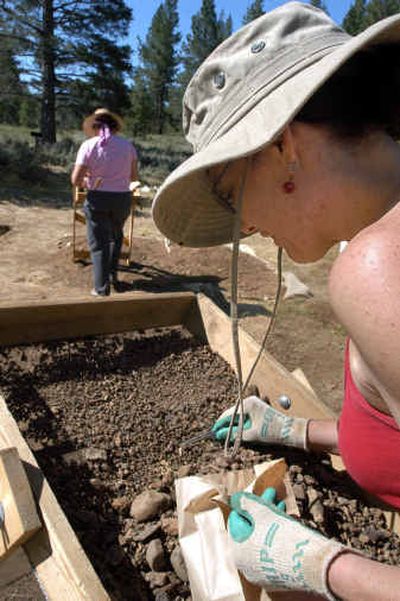Team uncovers Donner Party cooking hearth

TRUCKEE, Calif. – Archaeologists have unearthed a cooking hearth in the Sierra Nevada where they believe the Donner Party gathered for meager meals in the months before starvation led to the country’s most famous tale of cannibalism.
Researchers said Wednesday that bone fragments they located appear to be large enough to allow for DNA testing to determine if they are human. They also found lead shot, musket balls, jewelry beads and wagon parts.
If some of the bones are human, they would be the first physical evidence to back up survivors’ accounts that some members of the Donner Party resorted to cannibalism to survive being trapped in snow during the winter of 1846-47.
Dogs trained to find graves in criminal investigations are repeatedly signaling the presence of human remains at the site in the Tahoe National Forest, just north of Truckee and about 35 miles southwest of Reno.
“There’s many, many people … who sincerely believe that this is the site based on the artifacts, the types of artifacts and what we call the archaeological assemblage that is here,” Forest Service spokeswoman Carrie Smith said.
“The big discovery is a definitive hearth. We also found large piece of charcoal and pieces of bone 1-1 1/2 inches long,” said Julie Schablitsky, a co-leader of the dig from the University of Oregon State’s Museum of Anthropology.
Some of the bones clearly are not human – probably deer, she said. But others could prove to be human through nuclear DNA testing.
The dig is taking place at a picnic area at Alder Creek Camp, where it’s believed the George and Jacob Donner families were trapped. A Discovery Channel team found the site last summer by using ground-penetrating radar.
This summer’s dig found the hearth buried about a foot deep in a meadow covered with foot-high wildflowers and surrounded by 100-foot-tall ponderosa pines.
The Donner Party families traveled west in the spring and summer of 1846 to claim free land in California. The party took an unproven “shortcut,” and was delayed on the trail in Utah and Nevada. The 81 men, women and children reached the Sierra in late October and were trapped in the snow at two camps, one at Donner Lake and the lower camp at Alder Creek.
About half the pioneers died and some survivors ate the flesh of their dead companions to stay alive. By then they had eaten their dogs and even boiled leather to eat the resulting glue to fend off starvation.
“The general public understands the reasons for cannibalism now,” Lochie Paige, a Sacramento nurse who is a great-great granddaughter of George Donner, told the Reno Gazette-Journal. “They realize the pioneers had no choice. What would you do in that situation if you were starving and had kids to feed?”